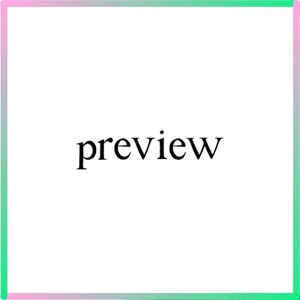Understanding the Art of Typography
Typography is an essential element of design. It’s like the paint on an artist’s palette, allowing designers to convey their message, set the mood, and create visual impact. Fonts are the building blocks of typography, and in this article, we will explore the 15 best fonts for your design projects. These fonts aren’t just about letters and characters; they are tools that can make or break your designs.
The Fundamentals of Typography
Fonts: The Backbone of Typography
Before we delve into the best fonts, it’s crucial to understand the basics. Fonts are the different styles and shapes that letters and characters can have. They can be divided into two primary categories: serif and sans-serif. Serif fonts have little ‘feet’ at the ends of their characters, while sans-serif fonts are clean and without these ‘feet.’ You can think of serif fonts as the classics and sans-serif fonts as the moderns.
Typeface Families and Styles
Fonts are organized into typeface families, which include a variety of styles. For example, within the ‘Times New Roman’ family, you’ll find ‘Times New Roman Regular,’ ‘Times New Roman Italic,’ ‘Times New Roman Bold,’ and so on. Each style serves a different purpose, and understanding them is the key to effective design.
Size, Weight, and Spacing
The size of your font, its weight (how bold or thin it appears), and the spacing between characters all contribute to the overall look and readability of your design. These factors vary depending on the message you want to convey and the medium you’re using.
The Criteria for Choosing the Best Fonts
Readability and Legibility
One of the most critical aspects of a font is its readability and legibility. Readability refers to how easily one can distinguish individual characters, while legibility refers to how comfortably you can read an entire block of text. The best fonts strike a balance between these two factors, making your text both clear and easy on the eyes.
Aesthetic Appeal
Your choice of font should align with the overall aesthetic of your design. For example, a whimsical ‘Comic Sans’ wouldn’t be suitable for a formal business proposal, but it might work perfectly for a children’s book cover. The best fonts complement the message and style of your project.
Versatility
A good font is versatile. It can adapt to different design contexts without losing its charm. Versatility ensures that you can use the same font for various projects, making your design work more efficient and consistent.
Mood and Emotion
Fonts have the power to convey emotions and set the mood of your design. A playful ‘Brush Script’ will evoke a different feeling than a serious ‘Times New Roman.’ Choose a font that resonates with the emotional tone you want to convey.
The 15 Best Fonts for Designers
1. Times New Roman

Why it’s the best font for traditional projects: Times New Roman is a classic serif font that exudes elegance and professionalism. It’s perfect for academic papers, formal documents, and printed materials.
How to use it effectively in design: Ensure you set it at a readable size and pair it with complementary fonts for headings and subheadings.
2. Arial

The go-to choice for modern and clean designs: Arial’s simplicity and clean lines make it perfect for modern, minimalist designs. Use it in presentations, websites, or any project that needs a crisp, contemporary look.
Tips for making the most of Arial: Experiment with different font weights to create visual hierarchy in your design.
3. Helvetica

Minimalistic elegance and its application: Helvetica is the epitome of minimalism. It’s a versatile font suitable for anything from logos to posters. Its clean lines and even spacing make it an ideal choice for a modern look.
Examples of projects where Helvetica shines: Check out famous logos like IBM and American Apparel to see how Helvetica is used effectively.
4. Comic Sans

Playful and fun typography: Comic Sans is often criticized, but when used appropriately, it can bring a sense of playfulness to your design. Consider it for kid’s party invitations or creative projects.
Where to use Comic Sans appropriately: Think of birthday cards, event posters, or art-related materials.
5. Georgia

Elegant, web-friendly serif font: Georgia combines the grace of a serif font with web-friendly characteristics. Use it for website content, especially when you want to add a touch of sophistication.
How to incorporate Georgia in web design: Pair it with sans-serif fonts for headings to create a contrast that enhances readability.
6. Impact

Bold and impactful typography: If you want your message to scream for attention, Impact is your go-to font. It’s excellent for headlines and banners where you want to grab your audience’s focus instantly.
Its role in attention-grabbing designs: Impact is often used in marketing materials, posters, and memes to create a strong impact.
7. Calibri

Modern and versatile font for various projects: Calibri is a contemporary sans-serif font that’s both elegant and adaptable. It’s perfect for documents, reports, and presentations.
Making Calibri work for you: Use it with a consistent size and line spacing for a polished look.
9. Futura

Geometric and futuristic design possibilities: Futura’s geometric shapes and clean lines make it ideal for futuristic or high-tech designs. Use it for technology-related projects or product branding.
Futura’s role in contemporary design: Many tech companies, like Volkswagen and Supreme, use Futura in their branding.
10. Papyrus

Unconventional and creative typography: Papyrus is often seen as quirky, but it can add a unique and creative touch to your designs. It’s excellent for artistic projects or when you want to create an exotic atmosphere.
When to use Papyrus for artistic expression: Consider it for art galleries, unconventional events, or anything that celebrates creativity.
11. Tahoma

A clear and easy-to-read font for various projects: Tahoma is a clean and straightforward sans-serif font suitable for different purposes. It’s great for labels, signs, and informative materials.
Tahoma’s suitability in academic work: Use it for reports, charts, and graphs to maintain clarity and readability.
12. Verdana

Web-friendly and user-friendly font: Verdana is a web-safe font designed for online content. It’s highly readable on screens, making it an excellent choice for websites, blogs, and digital materials.
Enhancing user experience with Verdana: Use it for body text and combine it with sans-serif fonts for headings to create a harmonious online experience.
13. Copperplate Gothic

Elegance and formality in design: Copperplate Gothic is a formal and elegant serif font that’s perfect for invitations, certificates, and high-end branding.
Where Copperplate Gothic excels: It’s often used in wedding invitations, diplomas, and luxury product packaging.
14. Rockwell

Robust and bold typography: Rockwell’s bold and sturdy appearance is ideal for strong and impactful designs. It’s a great choice for headlines and branding.
Rockwell’s role in branding and advertisements: You’ll find Rockwell in outdoor signage, magazine covers, and company logos.
15. Brush Script

Creative and hand-written style: Brush Script gives a personal, hand-crafted touch to your designs. It’s perfect for artistic projects and anything that needs a human touch.
How to use Brush Script for artistic designs: Consider it for art exhibitions, handmade product packaging, or personal branding.
Conclusion
In the world of design, fonts are like the paintbrushes of a painter. The right font can convey the message, set the mood, and create a lasting impression. The 15 fonts we’ve explored here cover a broad spectrum of styles and purposes. Remember, the best font for your project depends on the message you want to convey and the emotions you want to evoke. As you embark on your design journey, experiment with these fonts and discover the power of typography in bringing your creations to life.
